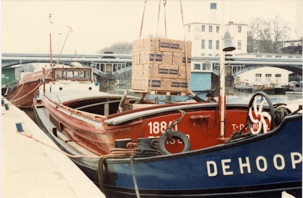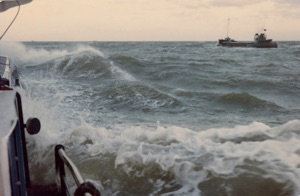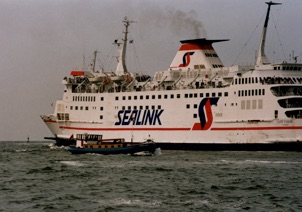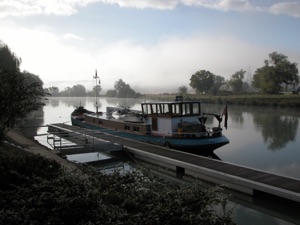
About Us
The one with the hat and beard is Tam and the blond is me, Di. The two little girls are actually boys; all that hair sort of gives the game away as to when this photo was taken - long, long ago, during our happy-hippy days. At the time we were working a pair of English canal boats and in the picture we are seen loaded with barrels of unprocessed lime pulp, heading up the Grand Union Canal to L.Rose and Sons wharf at Hemel Hempsted. Here the 50 tonnes of limes we have on board would be craned out of the boats and taken off to be turned into the products Roses was best known for: marmalade and lime juice.
Even then, our boating had a “foodie” connection.
It was also on these long trips across England, our pair of boats loaded with stuff like sand, grain, coal or the aforementioned barrels of lime, that I learned the value of slow food cooking. A pot of something deeply unctuous, gently bubbling away, left to its own devices for long periods of time, would act as a spur to keep us going through rain and snow and fog, knowing that we would be devouring our delicious dinner mere minutes after we had tied up for the night. Once on the move, I was either steering the butty or lockwheeling ahead of the boats, so there was little time to attend to the niceties of cooking - a quick poke, now and again, at the fire burning in the range, which heated the oven, which cooked the casserole, would usually have to suffice.

Oh - but we did have some cracking meals then.
Over time we slowly expanded our fleet of narrow boats and barges but the trade was disappearing from our English canals. We moved into larger craft and out onto bigger waters. For several years we carried grain from Tilbury Docks on the river Thames to Cox’s mill on the river Wey with the odd freight of general cargo to upriver wharves at Kingston-on-Thames or round to Colchester on the Essex Colne.

Finally when even this trade finished we bought a ship or three and went to sea.
During all this time my interest in good food never wavered, it just became somewhat dormant, as the need to earn a living in what had become a dying industry consumed all the hours in the day and just about every day of the week. We fought hard to keep freight alive on UK inland waters but ultimately for us, it was all over - we sold the ships, the barges, the tugs, the boatyard, everything we had - until nothing much was left except one small motor barge called “Friesland”.


Enjoy